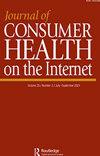Is YouTube® Adequate as a Source of Patient Information for Intravenous Sedation in Dentistry?
IF 0.7
Q4 PUBLIC, ENVIRONMENTAL & OCCUPATIONAL HEALTH
引用次数: 0
Abstract
Abstract Objective According to the results of the research conducted by the Pew Research Center in the USA, 80% of adult Internet users search for health on the Internet, and treatment decisions of 58% of them are affected by the information obtained. YouTube® is the most popular video-sharing platform globally, and many health-related videos are available. However, the information quality of YouTube® videos on intravenous sedation in dentistry is unclear. This study aimed to evaluate the information quality of YouTube® videos on “intravenous sedation in dentistry.” Materials and methods “Intravenous sedation in dentistry” was searched on YouTube®, and the first 200 videos were listed. Video features, i.e., like ratio (LR) and video power index (VPI), were recorded. The quality of videos was evaluated using the DISCERN questionnaire, Global Quality Score (GQS), and Journal of the American Medical Association (JAMA) score. Results The study included 130 videos, and 73.1% of the videos were published by private dental hospitals. However, 96.9% of the videos were of low quality considering the DISCERN total score. Only 14.6% of the videos with GQS and 1.5% with JAMA were of acceptable quality (score ≥3). Videos with “Fair” DISCERN total score and the DQ score of 4 had significantly higher VPI, view ratio, and number of comments. The VPI and view ratio were significantly higher in videos with a GQS score of 4. Moreover, the video quality was positively correlated with the video duration. Conclusion YouTube® content about intravenous sedation in dentistry was generally of low quality. It has been demonstrated that users viewed higher quality videos more and higher quality videos were more popular about “IV sedation in dentistry.” Thus, patients could be informed effectively and adequately by uploading accurate and quality YouTube® videos created by authorized institutions, anesthesiologists, and dentists.YouTube®是否足以作为牙科静脉镇静的患者信息来源?
摘要目的根据美国皮尤研究中心的研究结果,80%的成年互联网用户在互联网上搜索健康信息,其中58%的人的治疗决策受到所获得信息的影响。YouTube®是全球最受欢迎的视频共享平台,提供了许多与健康相关的视频。然而,关于牙科静脉镇静的YouTube®视频的信息质量尚不清楚。本研究旨在评估YouTube®关于“牙科静脉镇静”的视频的信息质量。在YouTube®上搜索“牙科静脉麻醉”的材料和方法,列出了前200个视频。记录视频特征,如比率(LR)和视频功率指数(VPI)。视频质量使用DISCERN问卷、全球质量评分(GQS)和美国医学会杂志(JAMA)评分进行评估。结果本研究共收录130个视频,其中73.1%的视频由私立口腔医院发布。然而,考虑到DISCERN总分,96.9%的视频质量较低。只有14.6%的GQS视频和1.5%的JAMA视频质量合格(得分≥3)。总分为“尚可”且DQ得分为4的视频具有显著更高的VPI、观看率和评论数量。GQS评分为4的视频的VPI和观看率明显更高。此外,视频质量与视频持续时间呈正相关。结论YouTube®关于牙科静脉镇静的内容质量普遍较低。事实证明,用户观看质量更高的视频的次数更多,关于“牙科IV镇静”的质量更高视频也更受欢迎。因此,通过上传由授权机构、麻醉师和牙医创建的准确、高质量的YouTube®视频,患者可以得到有效和充分的信息。
本文章由计算机程序翻译,如有差异,请以英文原文为准。
求助全文
约1分钟内获得全文
求助全文
来源期刊

Journal of Consumer Health on the Internet
PUBLIC, ENVIRONMENTAL & OCCUPATIONAL HEALTH-
CiteScore
1.30
自引率
12.50%
发文量
32
期刊介绍:
The Journal of Consumer Health on the Internet is the only professional peer-reviewed journal devoted to locating consumer health information via the Internet. In this journal librarians and health information providers describe programs and services aimed at helping patients and the general public find the health information they need. From the Editor: "Studies have shown that health information is one of the major reasons that people worldwide access the Internet. As the amount of health information on the Web increases exponentially, it becomes critical that librarians-including public and medical librarians-be knowledgeable about what is available online and be able to direct users to reliable, accurate, quality information."
 求助内容:
求助内容: 应助结果提醒方式:
应助结果提醒方式:


